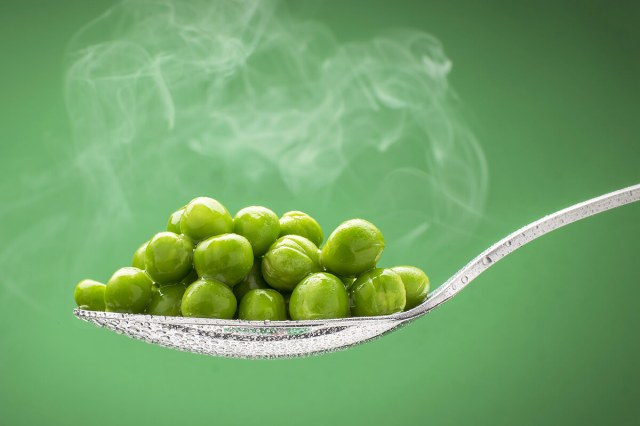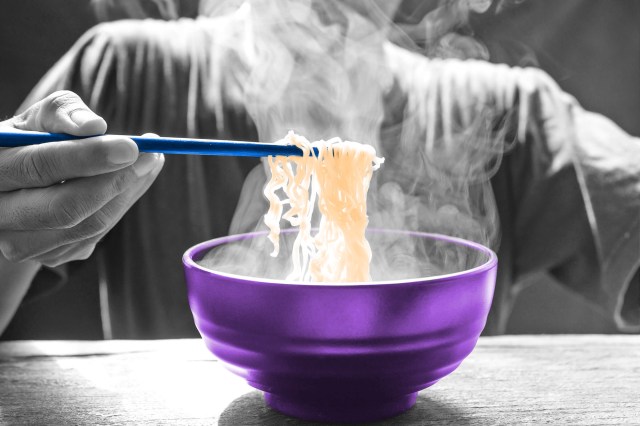
We Have Physics To Thank
Food that’s steaming hot loses heat to its surrounding environment through three main processes: conduction, radiation, and convection. Conduction refers to the transfer of heat through direct contact between molecules, while radiation involves the food releasing heat in the form of infrared energy. While both of these processes can cause food to cool, neither explains why blowing on food lowers its temperature.
That’s where convection comes in. Hot food heats the air around it, creating a layer of warm air that insulates the food and slows heat loss. Blowing on the food replaces this warm air with cooler air, which increases the temperature gradient, aka the difference between the food and its surroundings. Increasing the temperature gradient speeds up the heat transfer, allowing food to cool faster. Blowing on food essentially acts like a fan on a hot day, shifting the insulating hot air away from the food’s surface.
For hot liquids such as soup or coffee, a process called evaporative cooling also plays an important role in reducing the substance’s temperature. When water molecules on the liquid’s surface evaporate, they carry heat energy with them. Blowing on the liquid helps disperse the layer of water vapor above, allowing more molecules to escape and increasing the cooling effect. The movement of the liquid caused by blowing — think of the ripples created when we blow on a bowl of soup — also increases the liquid’s surface area, which increases evaporation and further accelerates the cooling process.

Blowing on Food Can Make It Safer To Eat
Eating food that’s too hot isn’t just uncomfortable; it can be dangerous. Temperatures above 110°F can cause superficial burns, while anything hotter than 160°F can burn us instantly. Hot beverages including coffee, hot chocolate, and tea are typically served at temperatures between 160 and 185 degrees Fahrenheit, which can lead to scalding burns. Blowing on substances such as these can help bring them down to a safely enjoyable range.
While blowing on food is effective, you can combine it with other techniques to cool your food even faster. For instance, cutting or shredding food into smaller pieces accelerates heat loss by exposing more of it to the air. Stirring liquids moves cooler portions to the surface and encourages more even heat distribution. And foods with high internal temperatures such as pizza rolls or lasagna simply need to rest for a few minutes to allow the heat to dissipate naturally.
But if we go overboard, blowing on food and drinks can also negatively affect our enjoyment of certain types of sustenance, such as soups or beverages like coffee and tea. High temperatures can enhance flavors and aromas, and excessive blowing could leave them lukewarm and less flavorful — which explains why a room-temperature cup of coffee is more likely to elicit an “eww” rather than an “ahhh.”

Blowing Can Also Warm Food
Interestingly, blowing on food can also work in reverse. Just as breathing on our cupped hands when they’re cold can give them a little boost of warmth, the warmth of our breath can also transfer to and raise the temperature of some foods, such as ice cream. However, this effect is much slower and less effective than the cooling process. That is because there’s typically a smaller temperature gradient between your breath, which matches the average body temperature of 98.6 degrees Fahrenheit, and the cold food than that of hot food and the cooler surrounding air.










